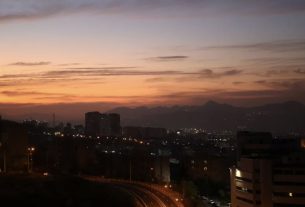【澳纽网援引Newshub报道】
Population growth in one of New Zealand’s most idyllic regions is set to tip it into crisis point, according to a prominent economist.
一位著名经济学家表示,新西兰最田园诗般的地区之一的人口增长将使其陷入危机。
[xyz-ihs snippet=”In-article-ads”]
More and more Kiwis are turning their backs on city life and embracing the regions, with data showing populations in the likes of Otago and Bay of Plenty all grew faster than the national average, with all regions apart from Auckland – New Zealand’s biggest city – and Hamilton experiencing gains through net internal migration.
越来越多的新西兰人正在背弃城市生活并拥抱这些地区,数据显示,奥塔哥和丰盛湾等地的人口增长速度都快于全国平均水平,除了新西兰最大的城市奥克兰和汉密尔顿之外,所有地区的人口都通过净内部移民而增长。
Queenstown Lakes had the biggest increase in population, growing 8 percent (3900) in the year to June – 1100 of which was through net internal migration.
皇后镇湖区的人口增幅最大,在截至6月的一年中增长了8%(3900人),其中1100人是通过净内部移民。
“The combination of internal migration, external migration in the last 12 months and you throw on top of that natural population growth… Now, you think about that number regarding what it means for infrastructure, for schooling, what it means for demand for housing and you’ve got crisis written all over it,” independent economist Cameron Bagrie said of Queenstown.
“过去12个月的内部移民和外部移民的结合,加上人口的自然增长……现在,你想想这个数字对基础设施、学校教育、住房需求意味着什么,你已经把危机写满了,“独立经济学家卡梅伦·巴格里(Cameron Bagrie)谈到皇后镇时说。
Bagrie said affordability was already a massive issue in the region. Average rents in the district have skyrocketed $78 to $598 per week this year, Infometrics data showed.
巴格里说,可负担性已经是该地区的一个大问题。Infometrics数据显示,今年该地区的平均租金飙升至每周598纽币。
[xyz-ihs snippet=”GoogleADresponsive”]
Reports this year revealed workers in the resort town were living in their cars due to a shortage of rental properties.
今年的报告显示,由于出租物业短缺,度假小镇的工人住在他们的汽车里。
Looking at other regions experiencing an ongoing influx of people – both internally and externally – Canterbury’s Selwyn and Mackenzie District’s grew by 5.2 and 3.6 percent respectively.
看看其他正在经历持续人口涌入的地区 – 无论是内部还是外部 – 坎特伯雷的塞尔温和麦肯齐区分别增长了5.2%和3.6%。
Auckland, meanwhile, typically loses between 10,000 and 14,000 people to internal migration per year. However, its population was growing again due to external migration.
与此同时,奥克兰通常每年因国内移民而流失10,000至14,000人。然而,由于外部移民,其人口再次增长。
“I think a lot of it’s just pretty simple economics,” Bagrie explained. “If you look at a house price, for instance, in a region versus a house in Auckland – it’s pretty obvious where the economics stack up an awful lot more, and, of course, that’s being accelerated by these dynamic shifts with regard to working from home.”
“我认为很多只是非常简单的经济学,”Bagrie解释道。“例如,如果你看一下一个地区的房价与奥克兰的房子,很明显,经济状况的积累要大得多,当然,这些关于在家工作的动态变化正在加速这一点。
[xyz-ihs snippet=”googleAD300x100″]
Crime rates were also likely driving people away from the big cities, he said.
他说,犯罪率也可能驱使人们远离大城市。
“Lifestyle’s a big part of it,” Bagrie said. “I suspect crime/law and order could be a bit of a driving factor [as well as] demographics [and] aging population.”
“生活方式是其中很重要的一部分,”Bagrie 说。“我怀疑犯罪/法律和秩序可能是一个驱动因素,以及人口统计和人口老龄化。
New Zealand’s total population was now 5,269,200, having grown 2.7 percent in the year to September.
新西兰的总人口现在为5,269,200人,在截至9月的一年中增长了2.7%。
来源:Newbub
[xyz-ihs snippet=”moreNZnews”]
[xyz-ihs snippet=”multiple-ads”]
9,444 views





